Social Welfare
Traditions Passed Down for Generations
Tribal Art Showcased at the India International Trade Fair
Posted On:
26 NOV 2025 12:23PM
Celebrating India's Living Cultural Legacy
With over 705 unique tribal groups making up 8.6% of its population, India is home to a vibrant heritage of unique traditional arts and handicrafts preserved by these communities.
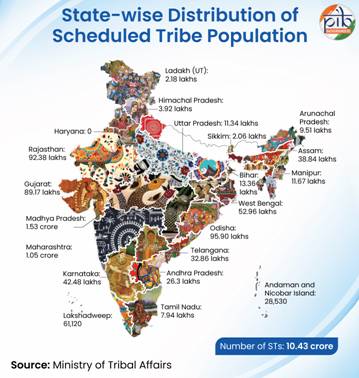
At the 44th India International Trade Fair in New Delhi, India’s rich tribal artforms are being honoured to commemorate ‘Ek Bharat: Shrestha Bharat’ (‘One India: Great India’).
At the Fair, tribal groups from across the country are exhibiting their work to a wider audience, supported by the Government of India and state governments.
Promotion of India’s tribal art and handicrafts ensures that these age-old traditions survive the test of time and contribute to the inclusive socio-economic development of India, as the country positions itself to be a $5 trillion economy by 2047.
Tribal Art and Handicrafts Showcased at IITF
Silk, the “Queen of Textiles”, has been an integral part of India’s economy and culture dating to the 15th century during the silk trade. India is the second largest producer of silk in the world.
Today, several tribal communities produce distinctive silk-based tribal art. They form part of the more than 9.76 million people across 52,000 villages who are employed in this sector.
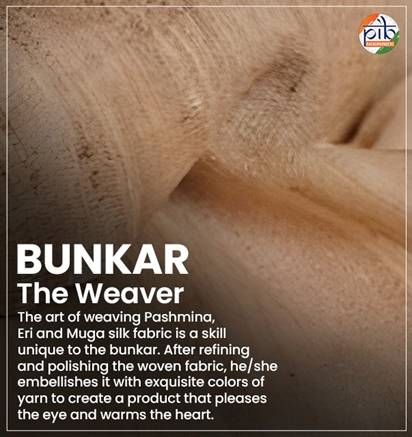
Sachin Walke, from the Gond tribal group in Nagpur, Maharashtra, belongs to a family that harvests and weaves tasar silk sarees and imprints ancient Warli and tooth-like karvat prints.
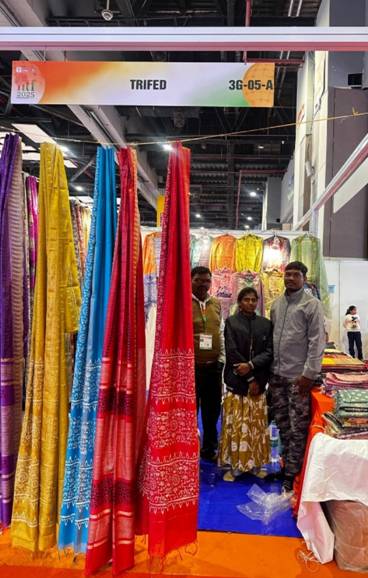
“From collecting the cocoons, to extracting and weaving the silk cloth to making the final product, we do it all,” said Walke.
The Tribal Co-operative Marketing Development Federation of India (TRIFED) under the Ministry of Tribal Affairs supported Walke to exhibit his work at the IITF, and at the Aadi Mahotsav fairs held in Delhi in February. “I really appreciate the support and the help. After production of the clothes, it is hard to find buyers – which we get from going to fairs and other places,” Walke said.
TRIFED aims to achieve socio-economic development of tribal communities by marketing their products, which form their primary source of income. The organisation empowers tribals through knowledge, tools, and systematic training.
Figure 1 - Sachin Walke (far right) at his stall.
Key Approaches:
1. Capacity Building: Sensitisation programs, Self Help Groups (SHGs), and skills training
2. Market Development: Exploring national and international markets for tribal products
3. Brand Creation: Establishing sustainable marketing opportunities and brand identity.
India has the unique distinction of being the only country producing all the four known commercial silks: Mulberry, Tasar (Tropical Tasar, Oak Tasar), Eri and Muga.
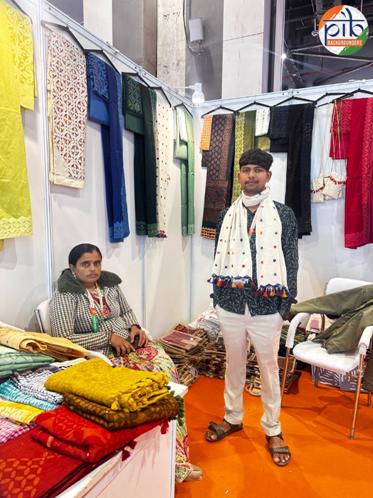
TRIFED also supports self-help groups sell their products. Ugamben Ramabhai Suthar from the Banaskantha district in Gujarat is one of the 300 women involved in making applique and mirror-work clothes on cotton and cotton-silk. Selling only in local markets earlier, the group has benefited from the exposure gained at Aadi Mahotsav in Delhi and various fairs in Gujarat.
Suthar’s relative, Prince Kumar Laljibhai Bhil, was also present at the IITF and said, “We gained many customers and got a good response at the Aadi Mahotsav fair.”
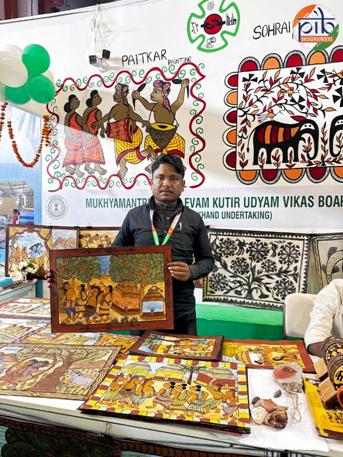
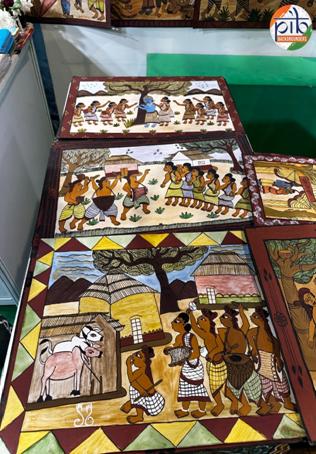
Jhantu Gope from the Purbi Singhbhum district in Jharkhand is striving to keep Paitker, his traditional tribal art form, alive.
Paitker, also known as Pyatkar, is one of India’s oldest surviving narrative art forms. The scroll-like paintings made using natural colours depict tribal dances, songs, myths and scenes from epics.
Gope learnt the art form whilst in school, but various families in his region who traditionally specialised in making the paintings have stopped making them. “It is hard to sell these paintings, and only a few such artisans remain,” Gope said. He added that the Jharkhand Kala Mandir, which aims at reviving vanishing art forms, supported him by helping him showcase at fairs, and the Government of Jharkhand’s Mukhyamantri Laghu Evam Kutir Udyam Vikas Board supported him at the IITF.
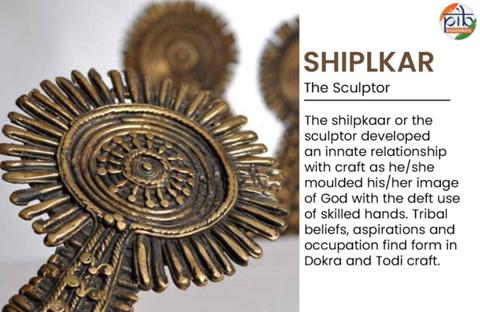
Vishal Bagmari from Baitur, Madya Pradesh is also preserving his traditional artform, Bharewa. Using scrap metal, Bagmari makes tribal statues of gods and goddesses, jewellery and ornaments. The Bharewas are a sub-tribe of Gonds, who are spread across central India, and practice this endangered art form.


Conclusion
The India International Trade Fair forms part of a broader national effort to preserve traditional tribal art forms and promote their cultural heritage, celebrating India’s unity in diversity. Various government organisations are helping tribal artisans find a wider audience so that their art and the communities that carry them forward can thrive and remain vibrant for generations to come.
RK
References
Download in PDF
(Features ID: 156206)
Visitor Counter : 67
Provide suggestions / comments